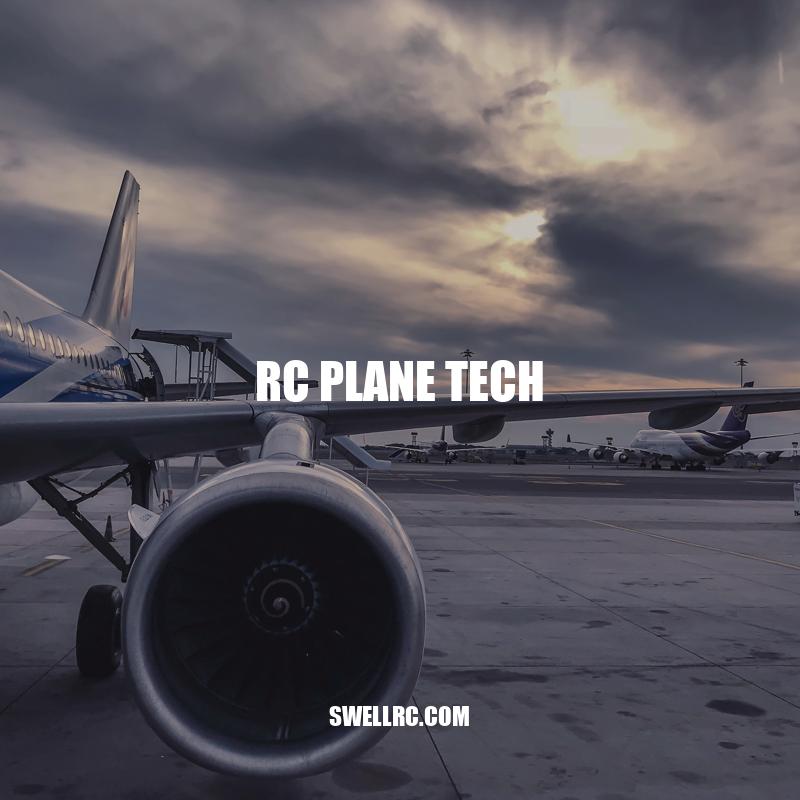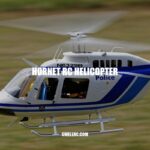Advancements in RC Plane Technology: The Future of Remote Control Flying.
RC planes, also known as radio-controlled airplanes, are miniature aircraft models that can be controlled remotely using a radio transmitter. These planes are typically powered by electric motors, gas engines, or jet turbines. RC planes come in various sizes and models, ranging from simple toy planes to advanced models that require skill and experience to operate. In recent years, RC planes have gained immense popularity as a hobby, attracting enthusiasts of all ages and skill levels. With advancements in technology, the performance and capabilities of RC planes have greatly improved, making them easier and more fun to fly. In this article, we’ll take a closer look at some of the technologies that have revolutionized the world of RC planes and made it a popular hobby.
Modern RC Plane Technology
- Advancements in technology have greatly improved the performance and capabilities of RC planes
- Lightweight materials like carbon fiber and Kevlar are commonly used for construction
- Electronic components like motors, servos, and ESCs (Electronic Speed Controllers) have become more reliable and efficient
- Modern RC planes are designed and tested using computer-aided design (CAD) software for better aerodynamics and performance
- 3D printing technology is now widely used by hobbyists to create custom parts and modifications for their RC planes
- Virtual Reality technology is being introduced into the RC plane hobby to improve the flying experience
What types of lightweight materials are commonly used in modern RC plane construction?
Foam, balsa wood, carbon fiber, and plastic are commonly used as lightweight materials in modern RC plane construction.
Remote Control Systems
Remote control systems operate an RC plane and are critical for a successful flight. Different types of remote control systems include 2.4 GHz and Spektrum DSMX. 2.4 GHz remote control systems offer better range and interference resistance than older systems. Spektrum DSMX systems provide interference-free performance and allow multiple users to fly at the same time.
More advanced remote control systems have telemetry capabilities which can feed information about an RC plane’s status back to the pilot.
| Remote Control System | Frequency | Range | Price Range |
|---|---|---|---|
| Flysky FS-i6 | 2.4 GHz | 300 meters | $50-$100 |
| Spektrum DX6 | 2.4 GHz | 1.6 kilometers | $200-$300 |
| JR PROPO XG14 | 2.4 GHz | 3 kilometers | $700-$800 |
What are the benefits of using a telemetry-capable remote control system for an RC plane?
The benefits of using a telemetry-capable remote control system for an RC plane include real-time data feedback on altitude, speed, battery life, and other performance metrics, allowing for better control and monitoring of the plane’s flight.
Batteries and Chargers
- Good batteries and chargers are crucial for long-lasting and safe RC plane flights
- NiMH batteries are cheaper and can handle a higher current load, but have less capacity and require more maintenance than LiPo batteries
- LiPo batteries have high energy density and last longer than NiMH batteries, but require special handling and storage due to their volatile chemistry
- Battery chargers come in different types such as balance chargers and fast chargers
- Balance chargers are slower but ensure that each cell in a battery pack is charged equally to prevent overcharging or undercharging, which can damage the battery and be dangerous
- Fast chargers can charge a battery quickly, but can be dangerous if not used properly and can shorten the battery’s lifespan
- Popular battery and charger brands include Venom, Hitec, and Tenergy
Why is special handling and storage required for LiPo batteries?
Special handling and storage is required for LiPo batteries because they are more delicate and prone to explosions or fires if not treated properly, due to their high energy density and reactive chemistry. They can also discharge quickly, and become damaged if exposed to high temperatures or overcharged.
Flight Controllers
- A flight controller is an electronic device that helps stabilize an RC plane and improve its flying characteristics
- Flight controllers can have different sensors such as accelerometers, gyroscopes, and barometers to detect the plane’s orientation, movement, and altitude
- Flight controllers can use different algorithms such as PID (Proportional-Integral-Derivative) or LQR (Linear-Quadratic Regulator) to adjust the plane’s control surfaces and reduce oscillations or drift
- Some flight controllers have advanced features such as GPS (Global Positioning System) for navigation, auto-tuning for easy setup, or OSD (On-Screen Display) for telemetry data
- Popular flight controller brands include Betaflight, Cleanflight, and iNav
- Flight controller software can be customized and updated using a computer and USB cable
- Community websites and forums such as RCGroups, Multirotor Forum, or FPVLab offer information and tutorials on flight controllers and their settings
What are some popular flight controller brands?
Some popular flight controller brands include DJI, Betaflight, KISS, Cleanflight, and RaceFlight.
FPV Technology
- FPV (First Person View) technology uses a camera mounted on an RC plane to transmit live video feed to a ground station
- FPV goggles are worn by the pilot to view the video feed as if they were inside the plane
- FPV can enhance the experience of flying an RC plane by providing a more immersive and realistic view
- FPV can also be used for aerial photography or video recording
- Some FPV systems have long-range capabilities, allowing pilots to fly their planes beyond their line of sight
- FPV racing has become a popular sport where pilots compete in races using specially designed quadcopters or wings with FPV gear
- FPV equipment can be purchased from hobby stores or online retailers such as GetFPV, ReadyMadeRC, or Amazon
- Community websites and forums such as FPVLAB, RCGroups, or FPV Chat offer information, tutorials, and reviews on FPV equipment and techniques
What is FPV racing and what types of drones are used for it?
FPV racing stands for First Person View racing, which involves racing small drones at high speeds through an obstacle course. The drones used for FPV racing are typically small and maneuverable quadcopters, equipped with cameras and first-person-view systems that allow the pilot to see through the drone’s eyes.
Conclusion
RC plane technology has come a long way from its early days, and the advancements made in the last few years have revolutionized the hobby. Thanks to lightweight materials, reliable electronics, powerful motors, and efficient batteries, RC planes can now fly faster, higher, and more realistically than ever before. With the addition of remote control systems, flight controllers, and FPV gear, pilots can experience the thrill of flying an RC plane in ways that were once unimaginable. The popularity of RC planes and the growth of online communities have also made it easier for newcomers to learn and get started.
However, while the technology may have evolved significantly, the fundamentals of flying an RC plane remain the same – practice, patience, and perseverance. Flying an RC plane is not just a hobby but an art that requires skill and practice to master. As the saying goes, “the sky’s the limit” when it comes to RC planes. With the right tools and techniques, pilots can explore the skies and indulge in this exciting and rewarding hobby.



